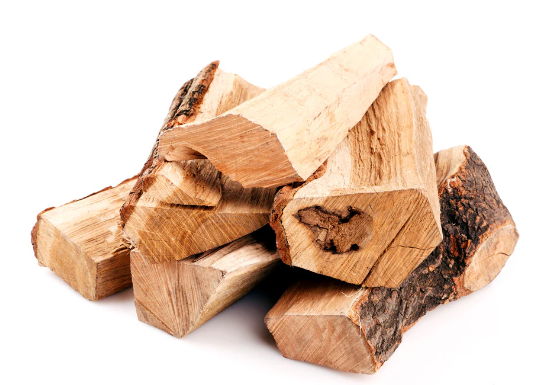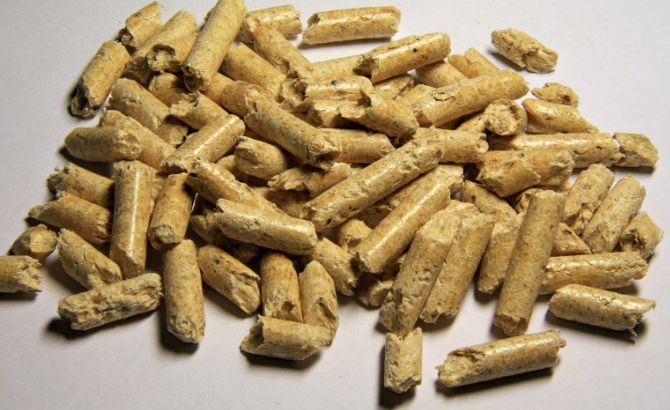Why Biomass and Kiln-Dried Logs Are Essentially the Same Fuel: Biomass has drawn a lot of interest in the search for renewable and sustainable energy sources. Kiln-dried logs are one of its numerous forms, and a notable example. Biomass and kiln-dried wood may appear dissimilar at first look. But a closer look at their characteristics reveals that they are essentially the same fuel. This is the reason.
Comprehending Biomass: What Is It? Any organic material derived from plants and animals is called biomass. It is a renewable energy source that comes from recently or currently existing live things. Biomass is the term used to describe fuel made mostly from plant materials in the context of energy production. Typical instances consist of:
–Wood and wood waste
–Crops and leftovers used in agriculture
–Garbage containing food, yard, and wood waste
–Human sewage and animal dung.
Utilization of Biomass
There are numerous ways to generate energy from biomass. It can be immediately burned to provide heat or processed to create biofuels like ethanol and biodiesel. Biomass is frequently co-fired with other fuels in conventional power plants or utilized in specialized biomass power plants for the production of electricity.
Kiln-Dried Logs: A Type of Biomass
How Do Kiln-Dried Logs Work?
Kiln-dried logs are logs that have undergone drying in an oven-like device called a kiln in order to lower the moisture content. As opposed to air drying, the drying method involves subjecting the logs to heat in a controlled atmosphere, which effectively removes excess moisture.
Kiln-Drying’s Significance
Kiln-dried logs have a number of benefits.
-Reduced Moisture level: Kiln-dried logs are best burned when the moisture level is less than 20%. As a result, combustion is cleaner and more effective than with green or air-dried wood.
-Improved Energy Efficiency: Higher energy production per log results from lower moisture content since less energy is lost during combustion evaporating water.
-Decreased Smoke and Emissions: Kiln-dried logs are a cleaner fuel source since they emit less smoke and other pollutants.
The Core Similarity: Energy Content and Combustion
Content of Energy
The basic characteristic of both biomass and kiln-dried logs is that they are carbon-based materials that are used to store solar energy. When this stored energy is released through combustion, it can be used to generate electricity, heat, or other energy sources.
Process of Combustion
Both kiln-dried wood and biomass burn with similar chemical reactions. When they burn, energy is released, mostly as heat, and other byproducts like carbon dioxide (CO2) and water vapor are also produced. Since the moisture content has a significant impact on the combustion’s efficiency and purity, kiln-dried logs are frequently chosen as a biomass due to their reduced moisture content.
The Versatility of Biomass
Different Forms, Same Fundamental Idea
A vast range of resources are included in the term “biomass,” including waste products and agricultural wastes as well as wood pellets and chips. All of these materials have the same basic ability to produce energy when used as fuel, despite their different forms.
Using Biomass in Energy Systems
Logs that have been kiln-dried can be directly replaced by biomass in a variety of energy systems. For example:
-Heating Systems: Both are suitable for use in boilers, furnaces, and wood stoves that use solid fuels.
-Power Generation: Similar to how kiln-dried logs can be utilized, biomass can be processed into pellets or chips that can be burned in power plants.
Environmental and Economic Considerations
Sustainable and Renewable
Renewable resources include both kiln-dried logs and biomass. When properly maintained, their resources may be restored quickly, making them viable substitutes for fossil fuels. When trees or other plants utilized as biomass are regrown, they also contribute to the sequestration of carbon.
Advantages for the Community and Economy
Utilizing locally produced biomass, such as kiln-dried logs, boosts regional economy and lessens the carbon footprint of fuel transportation. It also offers chances for resource efficiency and waste reduction because items that could otherwise be wasted are used.
In conclusion, there are two sides to a coin.
Logs that have been kiln-dried and biomass are really two different forms of the same energy source. Both are sustainable fuels with similar qualities and advantages that come from organic stuff. The energy that is stored in plant matter through photosynthesis is the same resource that is used to heat your house with kiln-dried logs or to power a plant with wood chips. As a result, they are essential allies in the fight for cleaner, more sustainable energy.


